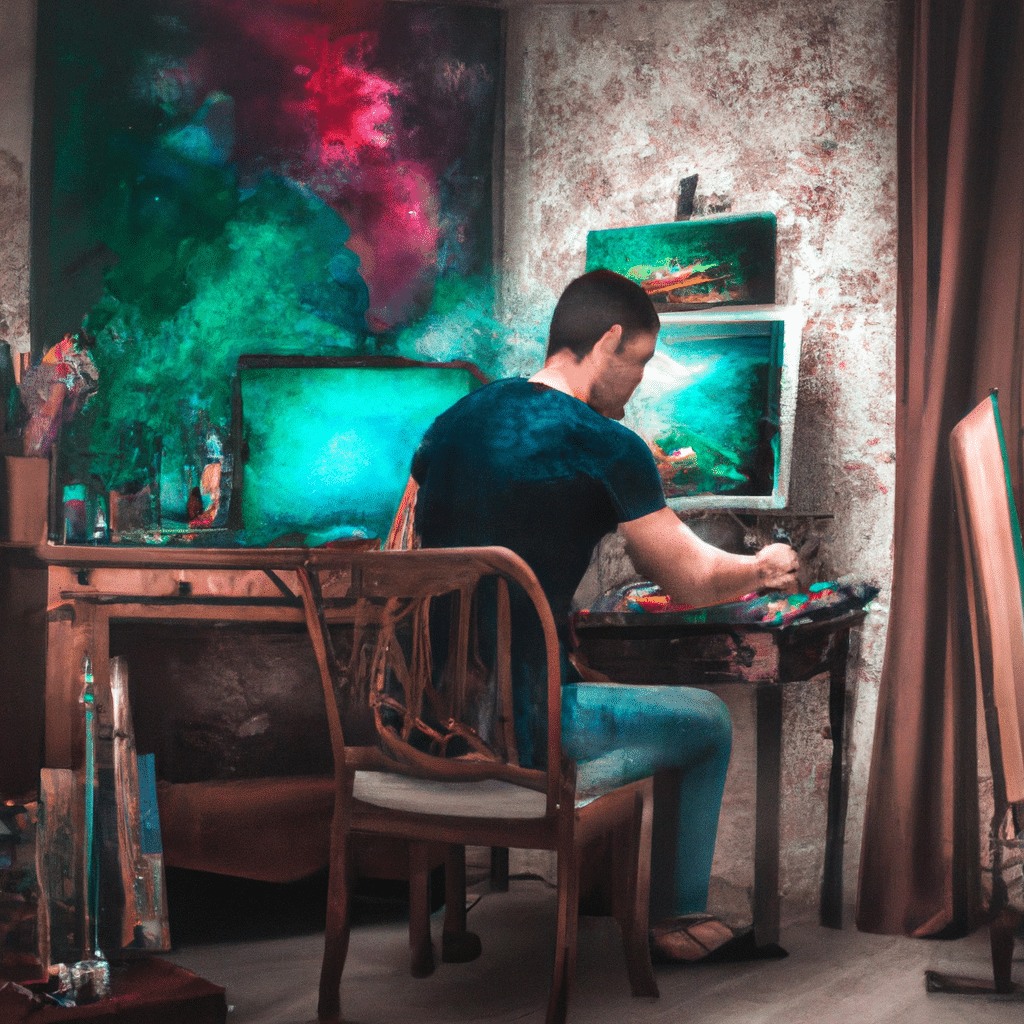In the realm of digital art, there exists a captivating subgenre that pushes the boundaries of realism to new heights. Hyperrealistic digital art is a mesmerizing form of artistic expression that strives to replicate reality with such precision and detail that it becomes nearly indistinguishable from a photograph. Digital artists who specialize in this genre possess an extraordinary skill set and employ a range of techniques to bring their creations to life. In this article, we delve into the secrets behind hyperrealistic digital art, exploring the mind-blowing techniques that digital artists employ to create jaw-dropping masterpieces.

The Evolution of Hyperrealistic Digital Art
Hyperrealistic digital art has its roots in the early days of digital painting, which emerged as a medium in the late 20th century. As technology advanced and software tools became more sophisticated, artists began to explore the possibilities of creating incredibly realistic artworks using digital mediums. Today, hyperrealistic digital art has gained widespread recognition and has become a prominent genre within the art world.
Tools of the Trade: Software and Hardware
To embark on the journey of creating hyperrealistic digital art, artists rely on a combination of powerful software and high-quality hardware. One of the most popular software tools used by digital artists is Adobe Photoshop, which offers a wide range of features and capabilities for manipulating and enhancing digital images. Other software programs, such as Corel Painter and Autodesk SketchBook, are also commonly used in the creation of hyperrealistic digital art.
In terms of hardware, digital artists often work with advanced graphic tablets that allow for precise and accurate input. These tablets come equipped with pressure-sensitive pens, which enable artists to mimic the feel of traditional drawing and painting techniques. Additionally, a high-resolution monitor with color calibration is essential for achieving accurate color reproduction in hyperrealistic digital artworks.
The Art of Observation: Reference Images and Photorealism
One of the key aspects of creating hyperrealistic digital art is the art of observation. Digital artists meticulously study their subjects, whether it be a portrait, still life, or landscape, to capture every minute detail. Reference images play a crucial role in this process, serving as a guide for accurate representation. Artists often take their own reference photos or utilize stock images that align with their vision.
Photorealism is a technique frequently employed by digital artists in the pursuit of hyperrealism. This technique involves recreating the appearance of a photograph with astonishing precision and attention to detail. By carefully observing lighting, shadows, textures, and reflections, artists can create artworks that deceive the eye and evoke a sense of awe and wonder.
The Power of Layers and Blending Modes
Layers and blending modes are indispensable tools in the arsenal of a hyperrealistic digital artist. Layers allow artists to work on different elements of the artwork separately, making it easier to refine and adjust specific areas without affecting the entire composition. By utilizing blending modes, artists can seamlessly integrate different layers, creating realistic lighting effects, depth, and texture.
Additionally, the use of masks in conjunction with layers and blending modes allows for precise control over the visibility and transparency of specific areas. This level of control enables artists to achieve seamless integration of different elements, resulting in hyperrealistic artworks that appear as if they were captured through a camera lens.
The Magic of Brushes and Textures
Brushes and textures play a vital role in the creation of hyperrealistic digital art. Artists carefully select brushes that mimic traditional painting techniques, such as oil brushes or watercolor brushes, to achieve realistic brushstrokes and textures. These brushes, combined with the ability to customize their settings, offer endless possibilities for creating lifelike details and textures in digital artwork.
Textures, on the other hand, add depth and realism to the artwork. Artists can incorporate textures from various sources, such as photographs or scanned textures, to enhance the visual experience. By carefully manipulating these textures and blending them seamlessly into the composition, artists can elevate their hyperrealistic artworks to another level of authenticity.
Pushing the Limits: 3D Modeling and Rendering
In the pursuit of pushing the boundaries of hyperrealistic digital art, some artists turn to 3D modeling and rendering techniques. By creating 3D models of their subjects, artists can achieve an unprecedented level of realism and control over lighting, perspective, and composition. With the help of specialized software, such as Blender or ZBrush, artists can sculpt and refine their 3D models before rendering them into 2D images.
The integration of 3D elements into hyperrealistic digital artworks opens up a whole new realm of creative possibilities. Artists can experiment with unconventional perspectives, complex lighting scenarios, and intricate details that would be challenging to achieve through traditional 2D techniques alone. This fusion of 3D and 2D techniques creates a visual feast for the eyes and captivates viewers with its hyperrealistic allure.
Conclusion
Hyperrealistic digital art is a captivating genre that showcases the immense talent and ingenuity of digital artists. Through a combination of observation, meticulous attention to detail, and the utilization of advanced software and hardware, these artists are able to create jaw-dropping masterpieces that challenge our perception of reality. From the art of observation and photorealism to the power of layers, blending modes, brushes, and textures, every element of the creative process contributes to the mesmerizing world of hyperrealistic digital art. As technology continues to advance, we can only anticipate the evolution and innovation that lies ahead in this awe-inspiring genre.



